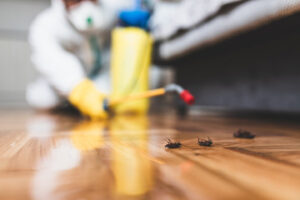Web design is a practice that encompasses a wide range of skills and principles. These include balancing content and visuals, prioritizing user experience, and creating an effective digital presence.

Visual hierarchy, based on Gestalt psychology, influences the way the eye perceives a design. It shows which parts are most important and makes them stand out from the rest. Contact Northern Virginia SEO for professional help.
The user-centric approach to web design is an important strategy that prioritizes the needs and preferences of your audience. This process involves understanding your target audience’s goals, motivations, and capabilities, which will help you create a website that meets their expectations. It also ensures that your site is functional and easy to navigate.
A user-centric approach can be used in a variety of ways, from conducting surveys to analyzing data from existing users. You can use this information to identify common problems and make improvements. For example, if your site’s navigation is confusing or difficult to use, you can change the layout or add clearer links. You can also improve the site’s performance by making sure it loads quickly.
Using a user-centric design approach to your website can help you achieve business goals, such as increasing sales or building brand recognition. In addition, it can boost your search engine ranking. This is because Google rewards websites that are viewed by users as authoritative sites.
While it is not possible to predict exactly what a user will want, it is important to keep their needs in mind during the design process. User-centered design involves a number of steps, including research, aligning design with business goals, creating prototypes, and testing. It is an iterative process that includes regular analysis and feedback to ensure that your site is meeting your users’ needs.
A user-centric approach to web design is essential for converting visitors into customers. Having a site that is easy to use and provides the information they need is key to building trust and establishing customer loyalty. Once a user starts to trust your website and business, they will recommend it to their friends and family. This will lead to a steady stream of new traffic and increase your conversion rate.
Visual aspect
Web design is a mix of artistic creativity and technical prowess, all geared towards creating a digital space that tells a story, conveys a brand’s identity, and provides a seamless user experience. It requires an understanding of the user’s needs and expectations and a thorough knowledge of the brand’s goals.
Visual appeal plays a critical role in the success of a website. A pleasant visual experience will lead to improved user engagement and satisfaction, as well as increased conversions. In addition, it is important to create a cohesive and consistent design for your site across all devices. This will improve usability and allow users to navigate easily and quickly.
Using a variety of visual elements, such as images and graphics, web designers communicate information in a clear and concise manner. They also use colors to evoke emotions, establish trust, and create a connection with the audience. These elements help to distinguish different pages and create a sense of visual hierarchy.
A key aspect of web design is the use of a grid to organize page content. This helps users understand how to navigate the website, as it enables them to read the text in a way that makes sense for their eyes. This technique is particularly useful for websites with a lot of text and is known as the F-pattern. It was discovered by eye-tracking technology and is considered to be the best layout for reading on screen.
Another key component of web design is the use of animations, which can be used to draw attention and entice customers to engage with your business. However, it’s important to remember that not all aesthetic choices will appeal to every end-user. Therefore, you must carefully consider the needs and preferences of your target audience before implementing a new aesthetic feature.
Adaptive design
The adaptive design approach focuses on creating desktop- and mobile-friendly versions of websites. This allows users to have a highly optimised experience, tailored to the unique strengths and limitations of their devices. This type of web design also offers the flexibility to create a distinct look and feel for specific device types, which can boost brand recognition and user engagement. However, adaptive design can be more resource-intensive than responsive web design (RWD) since it requires the creation of multiple layouts for different devices. It may also necessitate separate URLs, which can negatively impact SEO if not implemented carefully.
A website using the adaptive design approach uses a device detection tool to detect what kind of device the visitor is using and then serves them an appropriate version of the site. This method allows you to tailor content and navigation links to the needs of your audience, which is especially important as more people use smartphones to access the internet.
Both adaptive and responsive design have their advantages and disadvantages, but the best choice depends on your project’s goals and device usage patterns. Consider the following factors when choosing between adaptive and RWD.
Responsive web design works well for various screen sizes and future-proofs your website against new devices and screen resolutions. However, it can be less suited for more complex layouts because it provides less granular control over user experience on each individual device type. Adaptive design, on the other hand, can be more suitable for sites that require the creation of custom UIs for fixed hardware sets such as POS systems, flight kiosks, and mobile e-commerce. This eliminates the need to support multiple breakpoints and allows designers to focus on optimizing the UI for each hardware set.
Responsive design
The responsive design approach is an important way to optimize web content for mobile devices. The technique aims to provide an optimal user experience for visitors regardless of the device or screen size. This approach focuses on displaying the most relevant content first and hiding less-important elements for mobile users. It also considers keyboard accessibility, screen reader compatibility, and accessible forms.
Responsive designs use flexible grids to resize and reposition elements on the page. They can also use adaptive layouts to allow for different layout styles based on screen resolution. This makes it easy for designers to create websites that adapt to a range of screen sizes and browsers. The latest versions of HTML and CSS support responsive layouts, making it easier than ever to create a responsive website.
Many designers use responsive design to improve the UX of their sites and apps. However, it is important to test these designs in the real world and not just on a desktop computer with a high-speed connection. For example, it is important to test the site in areas with spotty cell-phone connections and between tall buildings.
One way to make a site responsive is to use the picture> tag, which lets designers choose different image resolutions based on screen size. Another method is to use CSS media queries to adjust font size and other display attributes on a per-screen basis. This method works on older browsers, but it can cause a delay in loading times and may not be the best option for sites with heavy graphics.
Another benefit of responsive design is that it can increase mobile traffic and improve SEO. It is also a great choice for businesses that want to reach a wide variety of consumers. Moreover, responsive websites are more likely to convert into sales than non-responsive ones. This makes it a vital strategy for any brand that wants to compete in the digital age.
SEO
While many people do not realize it, web design is closely linked to SEO. While it is possible to optimize a website solely through text content, ignoring the importance of web design can have detrimental effects on your site’s SEO rankings. A well-optimized site is one that is both beautiful and user-friendly. In addition, a website that is easy to navigate will encourage longer visits and increased brand trust. These are important factors in building relationships with customers.
A quality website can do more than just attract visitors; it also enables users to connect with a brand and take desired actions like signing up for newsletters, making purchases, or taking quizzes. This translates into organic traffic that can boost your business’s credibility and leave a positive mark on search engines.
The best way to achieve this is by incorporating SEO into the web design process from the start, rather than implementing it as an afterthought. This means considering your keywords, internal linking, and HTML structure before you begin designing your website. It is also important to use image optimization techniques. For example, naming your images correctly and limiting their size can improve both the speed of your website and its SEO performance.
As more and more companies and individuals invest in their online presence, the need to optimize web design for SEO becomes increasingly crucial. By combining web design and SEO, you can create a website that is both visually appealing and easily searchable by your target audience. This synergy will help you to achieve your goals and ensure that you are found by the right customers. To get started, you can use Semrush’s Site Audit tool to analyze your website’s search engine optimization metrics.

